Mechanism by Which MC Controls Harmful Algal Blooms Revealed by Cell Morphology of Aureococcus anophagefferens
Abstract
:1. Introduction
2. Materials and Methods
2.1. Materials
2.1.1. NC and MC
2.1.2. Algal Strain and Culture
2.2. Experimental Methods
2.2.1. Algal Cell Density Determination
2.2.2. HAB Removal Experiments
2.2.3. Cell Shape and Size Change Observations and Cytoplasmic Granularity Determination
2.2.4. Membrane Permeability Determination
2.2.5. Characteristics of NC and MC
3. Results and Discussion
3.1. Cell Growth in Response to MC
3.2. Changes in Cell Shape and Size of Residual A. anophagefferens
3.3. Changes in Cell Membrane Permeability for Residual A. anophagefferens
3.4. Changes in Cytoplasmic Granularity for Residual A. anophagefferens
3.5. The Mechanism by Which MC Controls HABs from a Cell Morphology Perspective
4. Conclusions
Author Contributions
Funding
Institutional Review Board Statement
Informed Consent Statement
Data Availability Statement
Acknowledgments
Conflicts of Interest
References
- NOAA. 2016. Available online: http://www.noaa.gov/what-is-harmful-algal-bloom (accessed on 23 September 2021).
- Anderson, D.M.; Cembella, A.D.; Hallegraeff, G.M. Progress in Understanding Harmful Algal Blooms: Paradigm Shifts and New Technologies for Research, Monitoring, and Management. Annu. Rev. Mar. Sci. 2012, 4, 143–176. [Google Scholar] [CrossRef] [Green Version]
- Al Shehhi, M.R.; Gherboudj, I.; Ghedira, H. An Overview of Historical Harmful Algae Blooms Outbreaks in the Arabian Seas. Mar. Pollut. Bull. 2014, 86, 314–324. [Google Scholar] [CrossRef]
- Yu, Z.; Song, X.; Cao, X.; Liu, Y. Mitigation of harmful algal blooms using modified clays: Theory, mechanisms, and applications. Harmful Algae 2017, 69, 48–64. [Google Scholar] [CrossRef]
- Ichiro Imai, M.Y.; Hori, Y. Eutrophication and occurrences of harmful algal blooms in the Seto Inland Sea, Japan. Plankton Benthos Res. 2006, 1, 71–84. [Google Scholar] [CrossRef] [Green Version]
- Shirota, A. Red tide problem and countermeasures II. Int. J. Aquat. Fish. Technol. 1989, 1, 195–223. [Google Scholar]
- Yu, Z.M.; Zou, J.Z.; Ma, X.N. A new method to improve the capability of clay for removing red tide organisms. Oceanol. Limnol. Sin. 1994, 25, 226–232, (In Chinese with English Abstract). [Google Scholar]
- Yu, Z.; Sengco, M.R.; Anderson, D.M. Flocculation and removal of the brown tide organism, Aureococcus anophagefferens (Chrysophyceae), using clays. Environ. Boil. Fishes 2004, 16, 101–110. [Google Scholar] [CrossRef]
- Han, M.Y.; Kim, W. A theoretical consideration of algae removal with clays. Microchem. J. 2001, 68, 157–161. [Google Scholar] [CrossRef]
- Anderson, D.M. Approaches to monitoring, control and management of harmful algal blooms (HABs). Ocean Coast. Manag. 2009, 52, 342–347. [Google Scholar] [CrossRef] [PubMed] [Green Version]
- Liu, S.; Yu, Z.; Song, X.; Cao, X. Effects of modified clay on the physiological and photosynthetic activities of Amphidinium carterae Hulburt. Harmful Algae 2017, 70, 64–72. [Google Scholar] [CrossRef]
- Liu, S.; Yu, Z.; Song, X.; Cao, X. Physiological and photosynthetic responses of Karenia mikimotoi to the modified clay mitigation method. Mar. Pollut. Bull. 2018, 133, 491–499. [Google Scholar] [CrossRef] [PubMed]
- Ji, H.; Yu, Z.; He, L.; Zhu, J.; Cao, X.; Song, X. Programmed cell death induced by modified clay in controlling Prorocentrum donghaiense bloom. J. Environ. Sci. 2021, 109, 123–134. [Google Scholar] [CrossRef]
- Zhu, J.; Yu, Z.; He, L.; Cao, X.; Ji, H.; Song, X. Physiological response dynamics of the brown tide organism Aureococcus anophagefferens treated with modified clay. Harmful Algae 2019, 86, 1–9. [Google Scholar] [CrossRef] [PubMed]
- Zhu, J.; Yu, Z.; He, L.; Cao, X.; Liu, S.; Song, X. Molecular Mechanism of Modified Clay Controlling the Brown Tide Organism Aureococcus anophagefferens Revealed by Transcriptome Analysis. Environ. Sci. Technol. 2018, 52, 7006–7014. [Google Scholar] [CrossRef] [PubMed]
- Gobler, C.J.; Lonsdale, D.J.; Boyer, G.L. A review of the causes, effects, and potential management of harmful brown tide blooms caused by Aureococcus anophagefferens (Hargraves et Sieburth). Estuaries 2005, 28, 726–749. [Google Scholar] [CrossRef]
- Liu, Y.; Cao, X.; Yu, Z.; Song, X.; Qiu, L. Flocculation of harmful algal cells using modified clay: Effects of the properties of the clay suspension. Environ. Boil. Fishes 2015, 28, 1623–1633. [Google Scholar] [CrossRef]
- Liu, Y.; Cao, X.; Yu, Z.; Song, X.; Qiu, L. Controlling harmful algae blooms using aluminum-modified clay. Mar. Pollut. Bull. 2016, 103, 211–219. [Google Scholar] [CrossRef] [PubMed]
- Wurch, L.L.; Haley, S.T.; Orchard, E.D.; Gobler, C.J.; Dyhrman, S.T. Nutrient-regulated transcriptional responses in the brown tide-forming alga Aureococcus anophagefferens. Environ. Microbiol. 2010, 13, 468–481. [Google Scholar] [CrossRef] [PubMed] [Green Version]
- Gobler, C.J.; Sunda, W.G. Ecosystem disruptive algal blooms of the brown tide species, Aureococcus anophagefferens and Aureoumbra lagunensis. Harmful Algae 2012, 14, 36–45. [Google Scholar] [CrossRef]
- Engesmo, A.; Strand, D.; Gran-Stadniczeñko, S.; Edvardsen, B.; Medlin, L.K.; Eikrem, W. Development of a qPCR assay to detect and quantify ichthyotoxic flagellates along the Norwegian coast, and the first Norwegian record of Fibrocapsa japonica (Raphidophyceae). Harmful Algae 2018, 75, 105–117. [Google Scholar] [CrossRef]
- Rousseau, V.; Lantoine, F.; Rodriguez, F.; LeGall, F.; Chrétiennot-Dinet, M.-J.; Lancelot, C. Characterization of Phaeocystis globosa (Prymnesiophyceae), the blooming species in the Southern North Sea. J. Sea Res. 2013, 76, 105–113. [Google Scholar] [CrossRef]
- Rieseberg, M.; Kasper, C.; Reardon, K.F.; Scheper, T. Flow cytometry in biotechnology. Appl. Microbiol. Biotechnol. 2001, 56, 350–360. [Google Scholar] [CrossRef] [PubMed]
- Veldhuis, M.J.W.; Kraay, G.W.; Timmermans, K.R. Cell death in phytoplankton: Correlation between changes in membrane permeability, photosynthetic activity, pigmentation and growth. Eur. J. Phycol. 2001, 36, 167–177. [Google Scholar] [CrossRef]
- Veldhuis, M.J.W.; Cucci, T.L.; Sieracki, M.E. Cellular DNA content of marine phytoplankton using two new fluorochromes: Taxonomic and ecological implications. J. Phycol. 1997, 33, 527–541. [Google Scholar] [CrossRef]
- Bouchard, J.N.; Purdie, D.A. Temporal variation of caspase 3-like protein activity in cultures of the harmful dinoflagellates Karenia brevis and Karenia mikimotoi. J. Plankton Res. 2010, 33, 961–972. [Google Scholar] [CrossRef] [Green Version]
- Venkatnarayanan, S.; Murthy, P.S.; Nancharaiah, Y.V.; Kirubagaran, R.; Venugopalan, V.P. Chlorination induced damage and recovery in marine diatoms: Assay by SYTOX (R) Green staining. Mar. Pollut. Bull. 2017, 124, 819–826. [Google Scholar] [CrossRef] [PubMed]
- Metaxas, A.; Wilkinson, N.; Raethke, E.; Dutcher, C.S. In situ polymer flocculation and growth in Taylor–Couette flows. Soft Matter 2018, 14, 8627–8635. [Google Scholar] [CrossRef] [PubMed]
- Louzao, M.C.; Abal, P.; Fernández, D.A.; Vieytes, M.R.; Legido, J.L.; Gómez, C.P.; Pais, J.; Botana, L.M. Study of Adsorption and Flocculation Properties of Natural Clays to Remove Prorocentrum lima. Toxins 2015, 7, 3977–3988. [Google Scholar] [CrossRef] [PubMed] [Green Version]
- Suksri, H.; Pongjanyakul, T. Interaction of nicotine with magnesium aluminum silicate at different pHs: Characterization of flocculate size, zeta potential and nicotine adsorption behavior. Colloids Surf. B Biointerfaces 2008, 65, 54–60. [Google Scholar] [CrossRef]
- Liu, D.; Wang, P.; Wei, G.; Dong, W.; Hui, F. Removal of algal blooms from freshwater by the coagulation–magnetic separation method. Environ. Sci. Pollut. Res. 2012, 20, 60–65. [Google Scholar] [CrossRef]
- Ramachandran, A.; Anderson, T.H.; Leal, L.G.; Israelachvili, J.N. Adhesive Interactions between Vesicles in the Strong Adhesion Limit. Langmuir 2010, 27, 59–73. [Google Scholar] [CrossRef] [PubMed] [Green Version]
- Stöckelhuber, K.W.; Svistkov, A.S.; Pelevin, A.G.; Heinrich, G. Impact of Filler Surface Modification on Large Scale Mechanics of Styrene Butadiene/Silica Rubber Composites. Macromolecules 2011, 44, 4366–4381. [Google Scholar] [CrossRef]
- Bricelj, V.M.; MacQuarrie, S.P.; Schaffner, R.A. Differential effects of Aureococcus anophagefferens isolates (“brown tide”) in unialgal and mixed suspensions on bivalve feeding. Mar. Biol. 2001, 139, 605–615. [Google Scholar]
- Robbins, H.M.; Bricelj, V.M.; Ward, J.E. In vivoEffects of Brown Tide on the Feeding Function of the Gill of the Northern Quahog Mercenaria mercenaria(Bivalvia: Veneridae). Biol. Bull. 2010, 219, 61–71. [Google Scholar] [CrossRef] [PubMed] [Green Version]
- Probyn, T.; Pitcher, G.; Pienaar, R.; Nuzzi, R. Brown Tides and Mariculture in Saldanha Bay, South Africa. Mar. Pollut. Bull. 2001, 42, 405–408. [Google Scholar] [CrossRef]
- Ren, X.; Yu, Z.; Qiu, L.; Cao, X.; Song, X. Effects of Modified Clay on Phaeocystis globosa Growth and Colony Formation. Int. J. Environ. Res. Public Health 2021, 18, 10163. [Google Scholar] [CrossRef]
- Wu, C.-S. Modulation of the interface between polyester and spent coffee grounds in polysaccharide membranes: Preparation, cell proliferation, antioxidant activity and tyrosinase activity. Mater. Sci. Eng. C 2017, 78, 530–538. [Google Scholar] [CrossRef]
- Rouhanifard, S.; Aguilar, A.L.; Meng, L.; Moremen, K.W.; Wu, P. Engineered Glycocalyx Regulates Stem Cell Proliferation in Murine Crypt Organoids. Cell Chem. Biol. 2018, 25, 439–446. [Google Scholar] [CrossRef] [Green Version]
- Dong, X.; Cao, X.; Jiang, W.; Song, X.; Yu, Z.; Yu, S. Profiles of and variations in aluminum species in PAC-MC used for the removal of blooming microalgae. J. Environ. Sci. 2021, 106, 76–82. [Google Scholar] [CrossRef] [PubMed]
- Ozaki, K.; Ito, E.; Tanabe, S.; Natsume, K.; Tsuji, K.; Harada, K.-I. Electron Microscopic Study on Lysis of a Cyanobacterium Microcystis. J. Health Sci. 2009, 55, 578–585. [Google Scholar] [CrossRef] [Green Version]
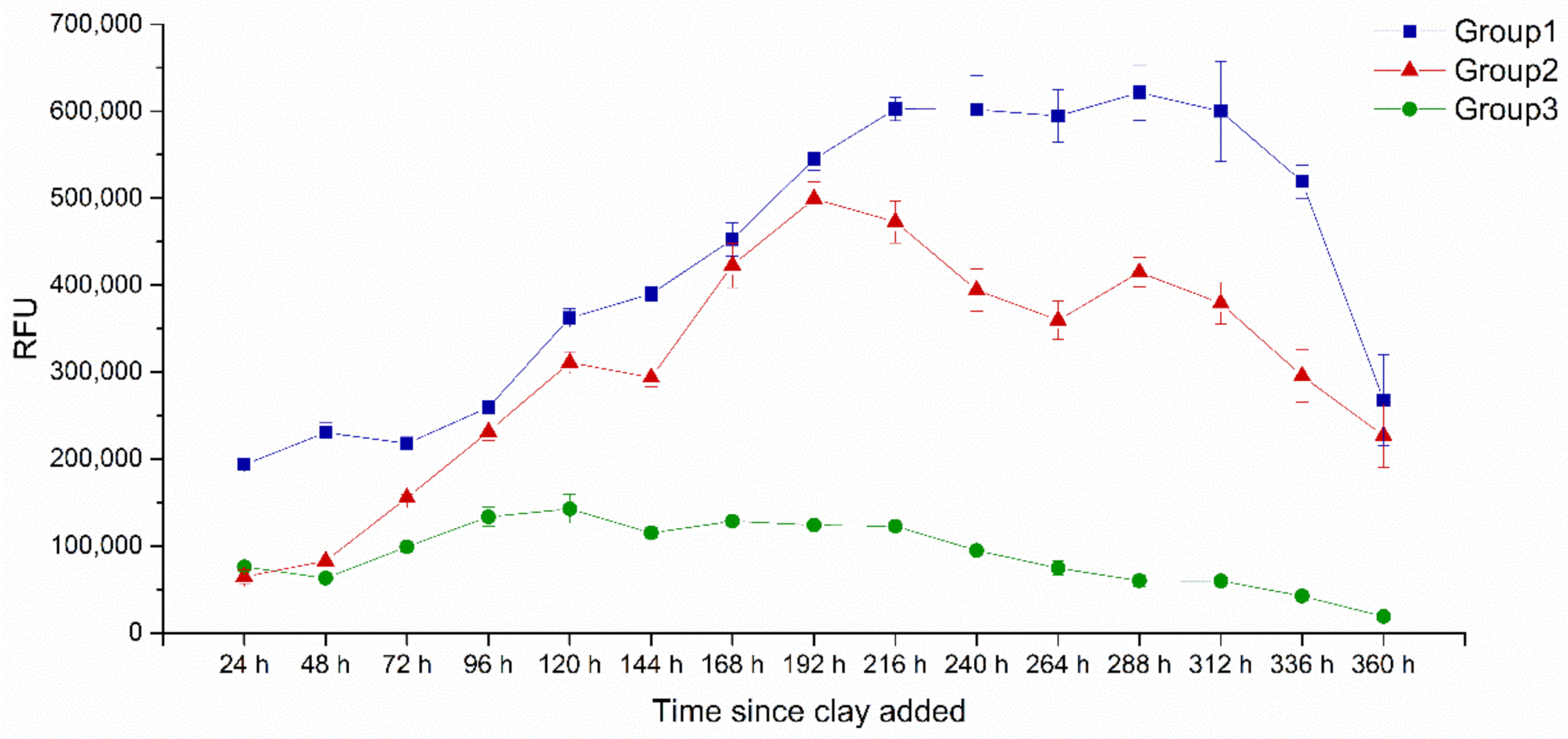
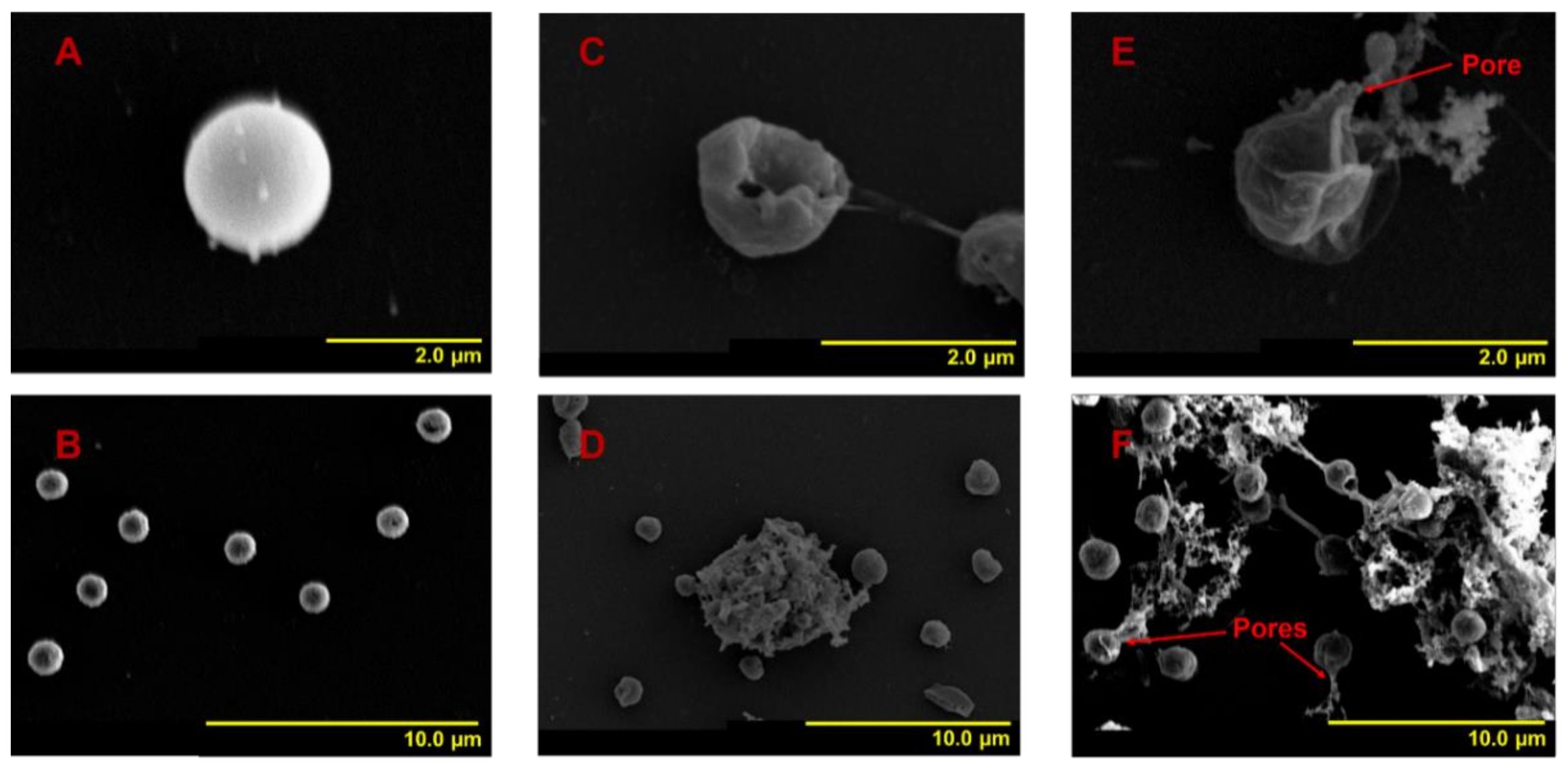
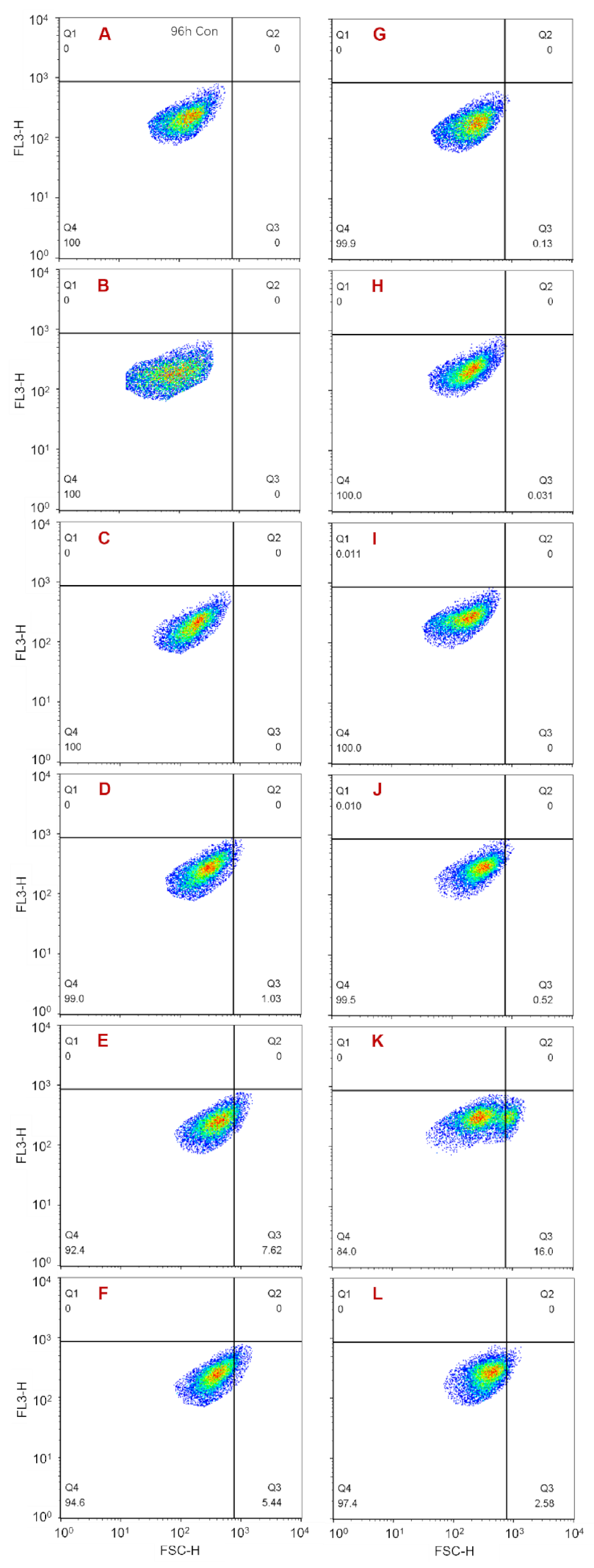

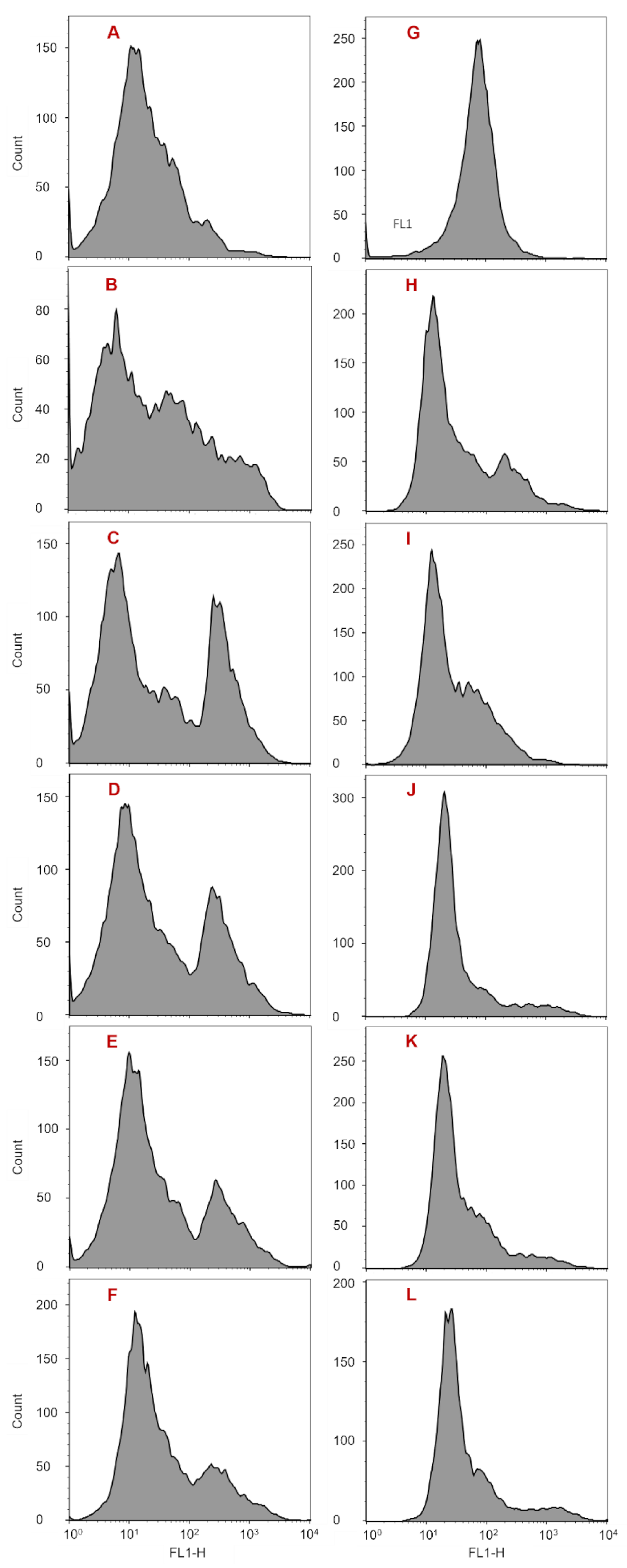
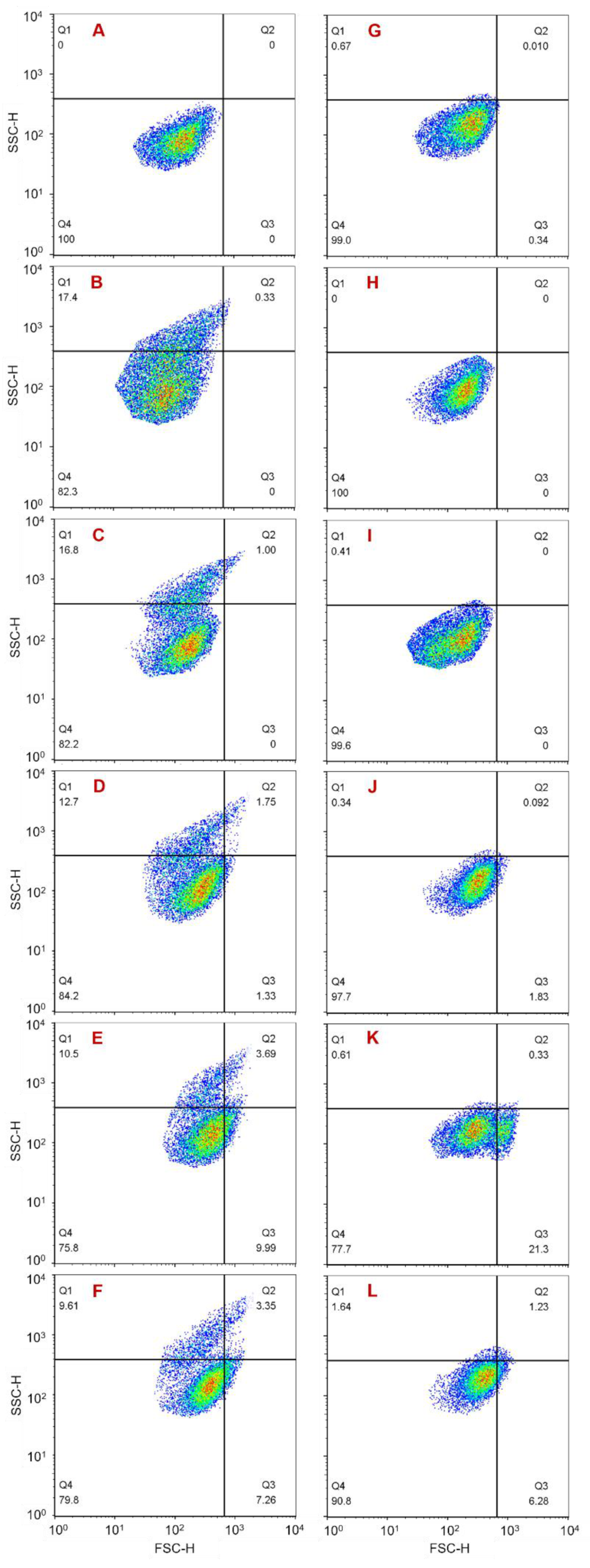
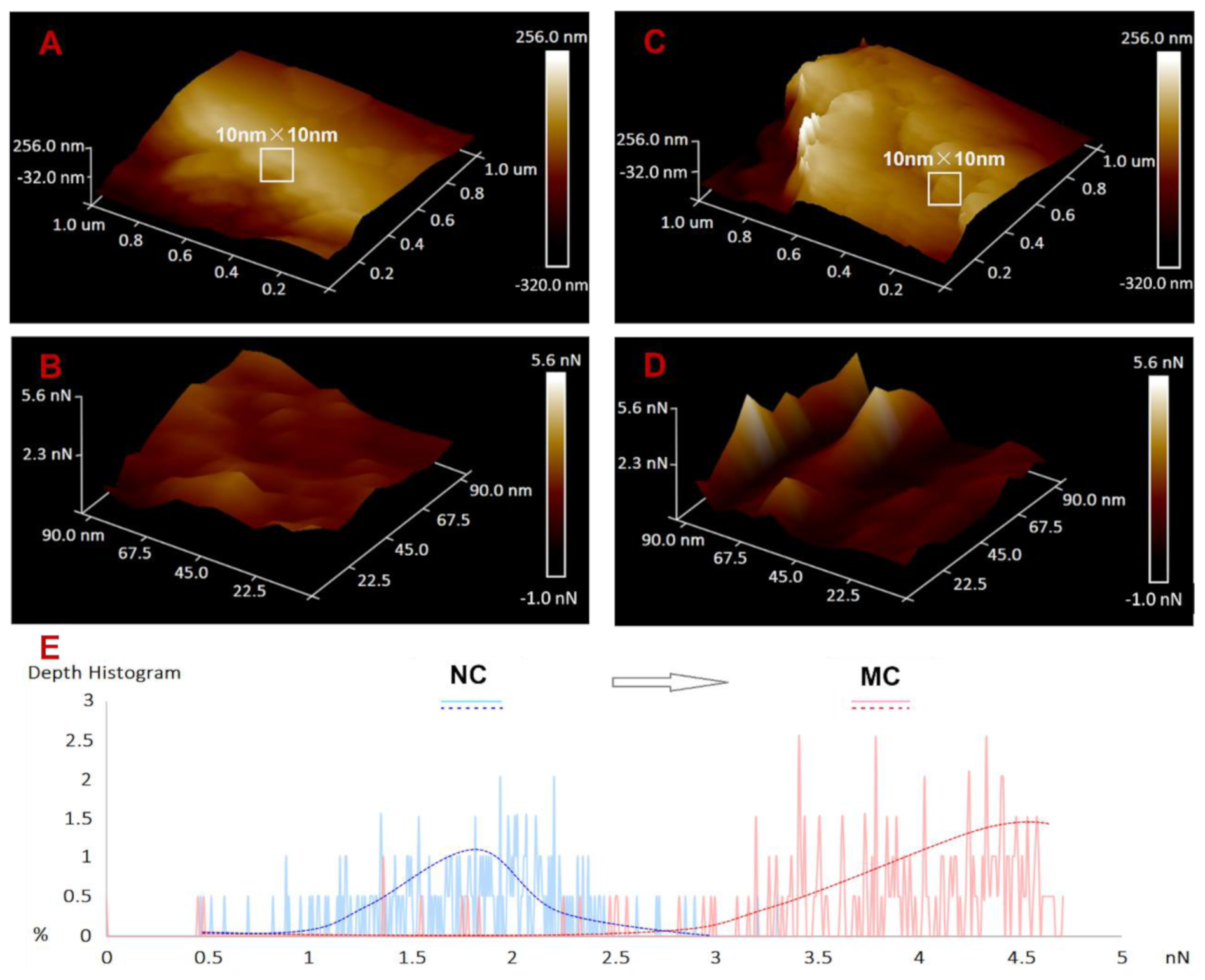
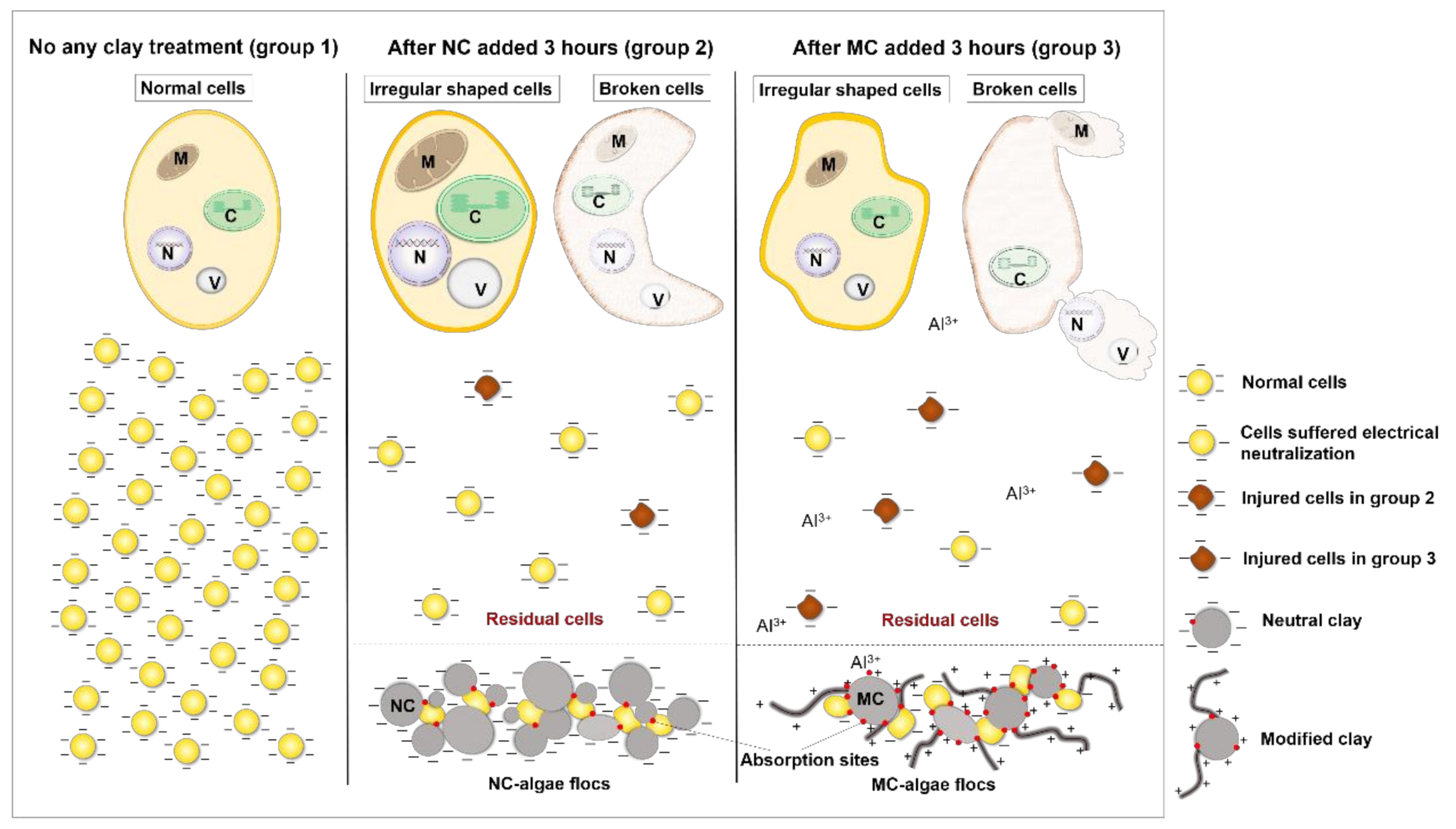
Publisher’s Note: MDPI stays neutral with regard to jurisdictional claims in published maps and institutional affiliations. |
© 2021 by the authors. Licensee MDPI, Basel, Switzerland. This article is an open access article distributed under the terms and conditions of the Creative Commons Attribution (CC BY) license (https://creativecommons.org/licenses/by/4.0/).
Share and Cite
Zhu, J.; Yu, Z.; He, L.; Cao, X.; Ji, H.; Song, X. Mechanism by Which MC Controls Harmful Algal Blooms Revealed by Cell Morphology of Aureococcus anophagefferens. Int. J. Environ. Res. Public Health 2021, 18, 11191. https://doi.org/10.3390/ijerph182111191
Zhu J, Yu Z, He L, Cao X, Ji H, Song X. Mechanism by Which MC Controls Harmful Algal Blooms Revealed by Cell Morphology of Aureococcus anophagefferens. International Journal of Environmental Research and Public Health. 2021; 18(21):11191. https://doi.org/10.3390/ijerph182111191
Chicago/Turabian StyleZhu, Jianan, Zhiming Yu, Liyan He, Xihua Cao, Hena Ji, and Xiuxian Song. 2021. "Mechanism by Which MC Controls Harmful Algal Blooms Revealed by Cell Morphology of Aureococcus anophagefferens" International Journal of Environmental Research and Public Health 18, no. 21: 11191. https://doi.org/10.3390/ijerph182111191





